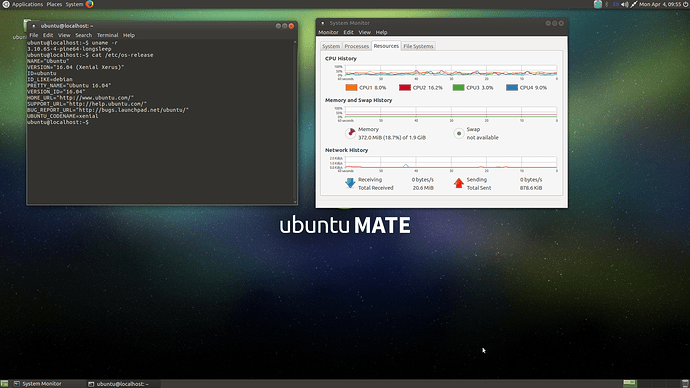Hello Everyone!
[TL;DR] The Pine 64 offers much better performance than RPI2/3 in nearly every desktop-application imaginable. Its much snappier in Mate and browsing the internet makes for a good experience. 360p video playback in-browser works good. As of today, the board experiences crashes, slowdowns and intermittent screen flickering.
Once every now and then a question gets asked whether a RPI 2/3 could make a viable (backup/secondary) desktop computer. And the short answer to this question is almost always 'no'. So I thought I would write this post and share some of my thoughts about a competing microcomputer - the Pine64 - which I have just received in the mail the other day (and installed Mate !). Before I start, I feel that a huge shoutout to Longsleep over at the Pine 64 forum is in order - as its his Image (BSP Kernel) I am running.
Now, how does Mate fare on Pine64? - you will be happy to hear that its running really well actually!
I am not going to provide any benchmarks here (they are available readily online) and instead want to focus on describing how it actually feels to work an entire day on this board as if it was a stationary PC.
I must say that the board - equipped with 2gb ram and 1000 Ethernet port - is very very snappy. It is noticeably faster than RPI3 and handles most work-related every-day tasks with ease. Editing documents in LibreOffice, checking and responding to emails (Thunderbird), reading PDFs, creating and copying documents (to servers), editing google docs, etc - its all a breeze. Multi-tasking is also a much better experience than on the RPI3. In this respect the Pine 64 running Mate feels just like you would on a regular x86 PC.
The Mate desktop is very snappy even with Marco enabled. The board boots into Mate in less than 20s (super quick!) and all UI elements are supper responsive right off the bat. One thing that I noticed is that the Mate Welcome did not stutter the way it does on the RPI2/3 and all the animations played perfectly. Compositing works just fine and everything else works and looks just perfect. There is no delay between pressing a button or tab and seeing the subsequent action happen on the screen. In idle the board reports Mate using just ~ 400 mb Ram and under load, with numerous windows open, that number has never exceeded 800mb Ram.
The real test for these little boards is, however, internet browsing and playing imbedded videos. Using a browser on the RPI 2 was a complete chore and while RPI3 yielded a tangible improvement over the last gen board, it too feels very sluggish. Not to mention that watching youtube on RPI boards is a very poor experience. So how does the Pine 64 stack up? I wouldn't call browsing the web a breeze but it is still (at least) twice as fast as on the RPI3. Pages load very quickly even on ad-heavy websites; I was surprised to see that gizmodo loaded in no more than 3 seconds from entering the URL including all ads. Scrolling up and down is also really nice and snappy - BBC website (my benchmark for scrolling) is perfectly 'scrollable' (I made a new word!). That said, the browser 'locks up' sometimes on ad-heavy websites and there is some stutter when scrolling. Where the Pine 64 really shines is video playback. In short, you can play 360p youtube videos in a browser (which load very quickly) without a problem; 480p works OK but not as fluid; 720p is a slide-show. The difference, once again, is that even 720p videos load very quickly unlike the RPI3.
So whats not so great ? A few things. For one, for the life of me I couldn't get HW accelerated video working [edit: apparently it is possible to get HW acceleration - will report back when and if I get it working]. Secondly, I don't know why but the only browser that works is Midori - Firefox just crashes and Chromium doesn't even start. Some applications will also crash spontaneously for no apparent reason - even if the board just sits there and does nothing. Then there are a bunch of quirks that I am sure will be ironed out with time - these include: intermittent screen flickering (occurring during heavy load), crashes (encountered 2 complete crashes during 12 hrs of use) and slowdowns. The latter is a bit of a head-scratcher; sometimes the board just slows down, for a lack of a better word, for a min or two and then everything just returns to normal.
So what do I call it ? Does Pine 64 make a viable Mate-based desktop replacement for light-weight use ? Not yet, but I can see the potential of this hardware running the Mate desktop. With the crashes, freezes and slowdowns resolved this could make for a computer that my mother could use on a daily basis to write an email to a friend, watch something (in 360p) on youtube and browse the internet.
Hope you enjoyed this  Feel free to ask anything !
Feel free to ask anything !
Cheers,
Luke

 For now tho, the experience (not performance) is considerably better on RPI3
For now tho, the experience (not performance) is considerably better on RPI3